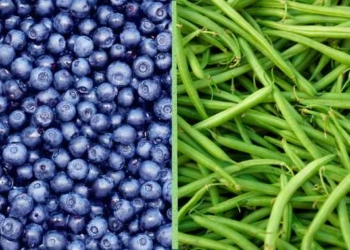
Are you thinking about growing some herbs but aren't sure which ones to choose? Herbs are more than just a tasty cooking ingredient. Turns out, some herbs have medicinal properties that can help you heal mentally and physically.
Which herbs should you grow at home?
Check out this guide to learn about the best medicinal herbs to grow at home.
1. Sage
Sage is a versatile herb that's also relatively easy to grow. Sage is widely used in Italian cooking and other types of Mediterranean cuisine. The ancient Romans coveted sage due to its healing properties.
Here are some of the benefits of sage:
- Loaded with vitamins, minerals, and nutrients
- Contains antimicrobial properties to support oral health
- Reduces blood sugar levels
- Eases symptoms of menopause
- Supports brain health and memory
- Lowers LDL cholesterol
- Protects the body against certain types of cancer
Sage is also a disinfectant and an astringent. To grow sage, you need plenty of sunshine, good soil drainage, and fresh air. You can grow sage from seed, or you can purchase small plants from your local nursery.
Many people also choose to grow sage using a Grow Box. Sage needs about 6 to 8 hours of sunlight each day. If you plan to grow sage outdoors, wait until it's at least 65 degrees outside to plant it. You should plant the seedlings about 18 to 24 inches apart.
Plant your sage in sandy, well-drained soil. Ideally, you want the soil to have a pH level between 6 and 7.
2. Basil
While basil is very common in Italian cuisine, you can also grow Thai basil, which makes a great addition to Asian dishes. Native to Asia, people have been cultivating basil for at least 5,000 years.
While we now mostly use basil for flavoring our pasta and garnishing our bruschetta, basil used to be harvested for its medicinal properties. Here are some of the biggest health benefits of basil:
- Contains antioxidants that protect the body from cell-damaging free radicals
- Promotes blood flow and healthy eyesight
- Excellent course of vitamin A, vitamin C, vitamin K, iron, and magnesium
- Can be made into essential oil for aromatherapy purposes
Basil prefers to stay moist, so make sure to water it on a regular basis. You should give your basil about one inch of water each week. Basil doesn't need much to grow, so don't worry too much about fertilizing it.
Many gardeners find that they can grow robust basil leaves without any fertilizer. Basil thrives in sunlight and warm temperatures, If growing indoors, place your basil pot by your window. However, you may want to move your basil away from the window during the midday so the heat doesn't scorch it, as basil enjoys temperatures around 70 degrees.
3. Thyme
Another excellent herb to grow for medicinal purposes is thyme. Thyme is perennial, which means it can grow year-round. People often take thyme by the mouth for whooping cough, bronchitis, colic, arthritis, sore throats, stomach pain, and diarrhea.
You can also apply thyme to your scalp to treat baldness, and you can apply it to your ears to fight fungal and bacterial infections. Thyme can also help stimulate your appetite and fight bad breath. Many mouthwash companies use thyme as a flavoring agent.
Just like basil and sage, thyme prefers the sunlight. It also likes an even supply of water, and you should be very careful not to overwater your thyme.
For best results, grow your thyme from the seed indoors, and then transfer it outdoors after the last frost. Although thyme can handle fairly poor soil conditions, it does best in light, well-drained soil. If you choose to keep your thyme indoors, place it in a container next to the window.
4. Chamomile
When most of us think of chamomile, we think of chamomile tea. However, chamomile's sweetness also makes it a delicious baking ingredient. It can add a unique flavor to your cakes, pastries, custards, and ice cream. The leaves are also enjoyable in salads.
While most people drink chamomile tea to soothe a sore throat, it has a number of other benefits, including:
- Reduces mentrual pain
- Reduces inflammation
- Slows down the onset of osteoporosis
- Helps with relaxation and sleep
- Helps regulate blood sugar
- Alleviates mild skin conditions such as eczema
- Aids in wound healing
Unlike the other herbs on this list, chamomile enjoys the shade and cool weather. Plant your chamomile in dry soil in partial shade. Once your chamomile establishes itself, it needs very little care. Don't give it too much fertilizer, as this will result in few flowers and weakly flavored foliage.
5. Parsley
Another herb with some powerful medicinal properties is parsley. People have been using parsley for thousands of years to treat a variety of infections and ailments including:
- Kidney stones
- Bladder infections
- Gastrointestinal disorders
- Diabetes
- Constipation
- High blood pressure
- Asthma
Parsley is also rich in antioxidants and contains cancer-fighting substances. It supports bone health and contains nutrients that protect your eyes.
Growing parsley is also relatively easy. If your growing parsley outdoors, place the seedlings about 6 to 8 inches apart in well-drained soil. Parsley needs a lot of nutrients to grow, so we suggest packing the soil with some aged compost. Also, make sure to plant your parsley in a sunny spot in your garden.
Best Medicinal Herbs to Grow: Time to Start Growing
Now that you know about the best medicinal herbs to grow, it's time to start planting. Before you know it, you'll have a flourishing herb garden.
Be sure to check back in with our blog for more gardening tips and tricks.















